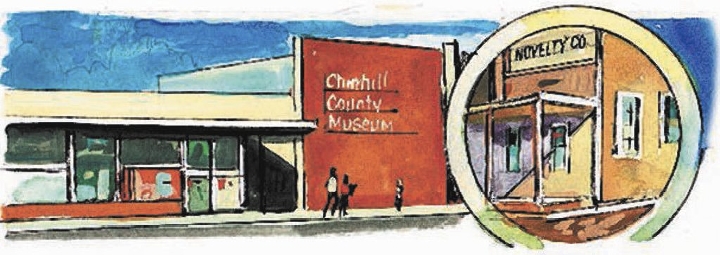Fallon’s fascinating past makes it more than a pit stop

Travelers along U.S. 95 between Las Vegas and the Reno-Sparks area usually treat Fallon as a fueling stop, a place to get a bite to eat or an option for an overnight stay before pushing on. The busy community in the heart of a rich agricultural region and wildlife area deserves a closer look. Explore the town a little to discover its fascinating past.
County seat for Churchill County since 1903, Fallon lies 385 miles from Las Vegas at the point where U.S. 95 and U.S. 50 meet and cross. Reno lies 60 miles to the west, using U.S. 50 and Interstate 80. Fallon lies in the Lahontan Valley on the Carson River, central to recreational attractions such as Lahontan State Recreation area, Fort Churchill State Historic Park, Sand Mountain Recreation Area and several national wildlife refuges. The Fallon Naval Air Station plays an important role in the life of the community.
Detour off U.S. 95 by turning right on Williams Street (U.S. 50) to reach Fallon’s historic downtown, passing handsome homes and buildings constructed when the town was new in the early 1900s. A standout among Fallon’s historic structures, a charming Queen Anne Victorian occupies a prominent corner on the right. The original 1903 clapboard Churchill County Courthouses stands trim, graceful and still in use, augmented by modern annexes. Note the sturdy, grim jail structure next door, in use for decades to house county miscreants. Turn right at the courthouse corner onto Maine Street, the town’s original commercial district where some venerable buildings still house businesses.
One of the original early 1900s structures has been moved to the Churchill County Museum complex a couple of blocks farther along Maine. The false-fronted, single story wooden structure that housed Woodliff’s Novelty Store was moved to save it from the kind of “modernization” that erases much of the character from many of America’s Main Streets. Renovated and reopened in 1984, the store provides extra exhibit space, including part of an old post office.
The Churchill County Museum’s spacious main building is itself a repurposed commercial structure. Some years ago, a generous frequent visitor to Fallon purchased an old Safeway building that stood empty after the supermarket moved out on the highway. Seeking to give support to the community, he donated the property to be used for a museum. The museum opened in 1968.
The remodeled market provided nearly 10,000 square feet of space for exhibits, meeting rooms, a gift shop and a repository for county records from as early as 1860 and city records since 1903. An annex houses vintage horse-drawn vehicles, early autos and trucks, a school bus, fire engines and a huge old steamroller, and a blacksmith’s shop provides 4,000 square feet more space.
Open free of charge Mondays through Saturdays all year, the museum strives to engage youngsters with its many hands-on exhibits. It continues to benefit from the generosity of the community and its visitors. Its exhibits include many pioneer relics and antique tools, furnishings and clothing that help bring Fallon’s early years to life. Although regional history includes the Pony Express, mountain men, the military, major emigrant trails, gold and silver seekers and ranching, the modern area began with diversion of Truckee River water to the Newlands Project, the nation’s first reclamation effort signed into law by President Theodore Roosevelt in 1902.
For thousands of years before that, indigenous people hunted, fished, farmed and gathered native foods in this relatively well-watered area. Examples of early Native American implements help explain the lives of the people who inhabited the area before settlers arrived. The museum works with the Bureau of Land Management to show visitors an archaeologically excavated cavern where native people deftly formed reed or tule duck decoys and other artifacts and prehistoric petroglyphs at Grimes Point along U.S. 50. Join BLM guides at the museum for an introductory video and free tours of nearby Hidden Cave and Grimes Point on the second and fourth Saturdays of each month. Call the museum for details at (775) 423-3677 or check online at www.ccmuseum.org.
Margo Bartlett Pesek’s column appears on Sundays.